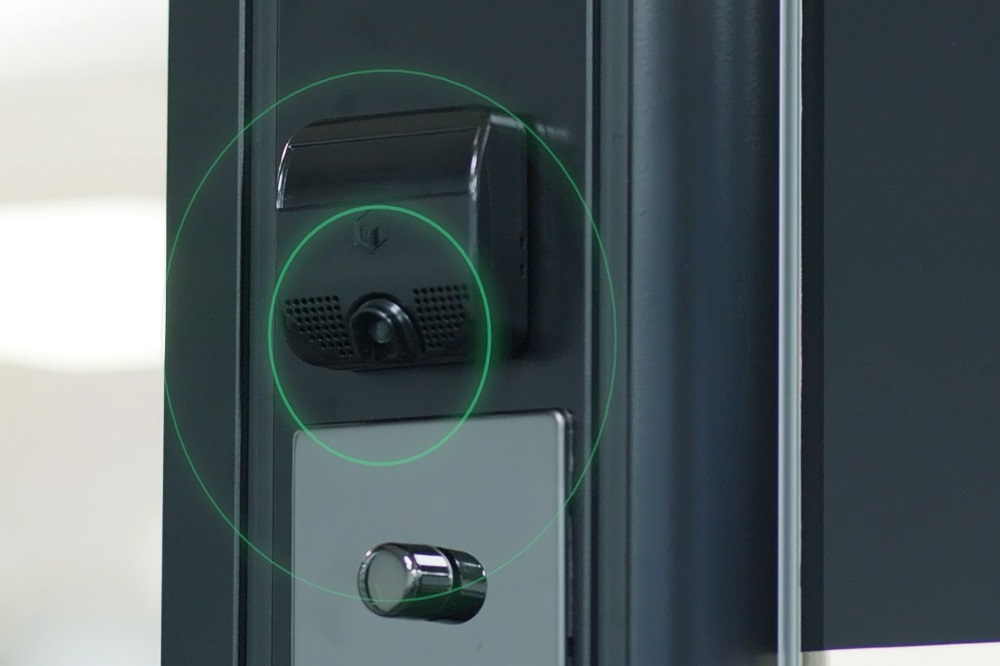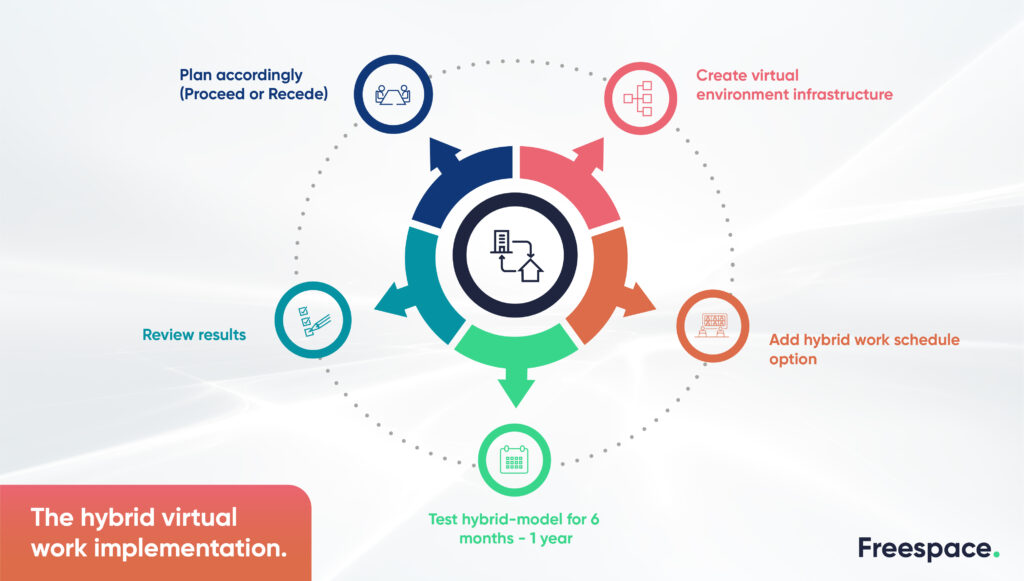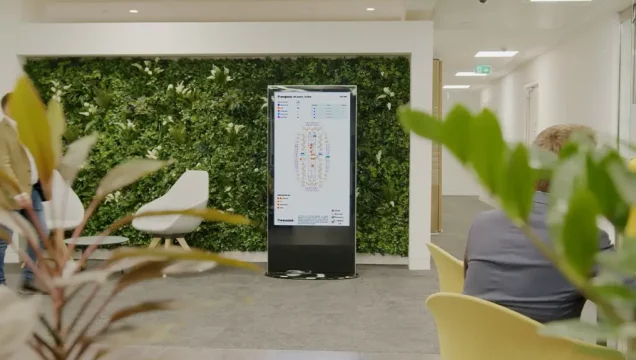

Many organisations are now embracing hybrid work models to balance the need for physical presence with remote productivity. However, successfully implementing a hybrid work strategy requires careful planning and execution to maximise the benefits of both office-based and remote working environments.
A literature review on the hybrid work model talks about the proven benefits of a flexible hybrid work model. They are as follows:
- Offers individuals flexibility and freedom to determine when and where they work.
- Fostering a culture of trust among employees can cultivate stronger loyalty and job satisfaction.
- Expanding the talent pool leading to a wealth of innovative and creative thinkers.
- Improves the bottom line through cost-savings on office spaces and travel expenses.
To facilitate a successful switch to the hybrid workplace, corporate workplace leaders must take deliberate and precise measures.

Here are 10 steps that will guarantee an efficient transition into a productive hybrid work environment.
1) Identify the type of work that should be done remotely and onsite. Different types of work are better suited for remote or office-based settings, so it’s important to assess the type of tasks your team will need to complete and decide which is best suited for each environment.
2) Determine which teams and roles should be office-based: Certain teams require regular physical collaboration for successful completion, so it’s essential to identify which team functions are most suited for an in-person setting. McKinsey survey indicates that a majority of executives anticipate employees who don’t need to be physically present to perform their job will spend anywhere from 21% to 80% of their time working from the office.
3) Develop a plan for flexible scheduling: A key component of hybrid work is providing employees with the flexibility to work from wherever is most convenient for them. Whether that means alternating days in the office, working from home a few days a week, or having an entirely remote team, it’s important to create a plan that works for everyone.
Technology plays a crucial role in supporting a hybrid workforce. Some of the essential technologies to consider are:

The Employee Experience App is an essential asset for the hybrid workforce, enhancing employee connections and productivity. With a user-friendly platform, it simplifies collaboration, day-to-day scheduling, and on-demand workplace amenity reservations. This powerful tool increases workplace efficiency.

Freespace Space Planner can help companies optimise their office spaces to accommodate a hybrid work model, ensuring that the space is used efficiently and effectively for both remote and on-site work. This can help companies save on real estate costs and adapt to the changing needs of the modern workforce.

Freespace Sensors to gain a complete picture of how their office space is being utilised, including passive occupancy data that is often overlooked but critical for optimising space usage.
4) Establish policies and procedures: Hybrid work strategies require clear policies and procedures to ensure everyone is on the same page. This includes setting expectations for availability, communication protocols, security measures, health and safety measures when working from home, and more.
5) Invest in new tools: In a hybrid office environment where autonomy reigns supreme, it is essential to invest in cutting-edge technology that facilitates seamless communication, instant accessibility, and on-the-spot information. One such tool is Freespace Signage which offers space visibility and flexibility in real-time.
6) Create a comprehensive onboarding and training program: Onboarding new employees into a hybrid workplace requires additional training to ensure they understand the expectations, policies, and procedures. Develop an onboarding plan that covers the basics of remote working and provides ample resources for further learning.
7) Promote collaboration: With remote and office-based teams, it can be difficult to ensure everyone is on the same page and working together effectively. Michael Ford, CVP of Global Workplace Services at Microsoft, emphasises the importance of workplace design that offers sufficient flexibility to meet the needs of all employees. A mix of collaboration areas, quiet places, and touch-down locations helps ensure everyone can be connected, engaged, and productive.
Freespace enables clients with the ability to do ideation surveys that let them see how their staff uses the space instead of only focusing on whether it’s just occupied.
8) Address challenges head-on: Implementing a hybrid work environment may come with challenges such as communication breakdowns, managing remote teams, and ensuring equal career growth opportunities for all employees. It’s important to remain proactive and address any issues that arise promptly and effectively.
9) Provide support: Managers should be available to offer guidance, answer questions, and provide resources to ensure employees remain productive in both remote and office-based environments. This can be easily exercised if the 3 key areas are taken care of. They are:
- Culture – Embrace growth and an adaptive mindset at your workplace.
- Space – Prioritise and work on flexibility.
- Technology – Key to managing hybrid work at scale.
10) Monitor progress: Track employee performance and engagement levels on an ongoing basis to identify areas that need improvement and ensure the hybrid workplace is achieving its desired outcomes.
By taking these ten steps, an organisation can implement a successful and efficient transition into a productive hybrid work environment.
With careful planning and execution, businesses can gain a competitive edge while helping employees achieve greater flexibility and productivity. According to Benjamin (2020), the hybrid virtual work implementation to try is as follows:

A successful hybrid work strategy is the result of hard work and dedication from everyone involved—it’s important to recognise the efforts of employees and managers throughout the process.
Showing appreciation for their achievements can help keep morale high and encourage ongoing commitment to making the hybrid workplace a success.


